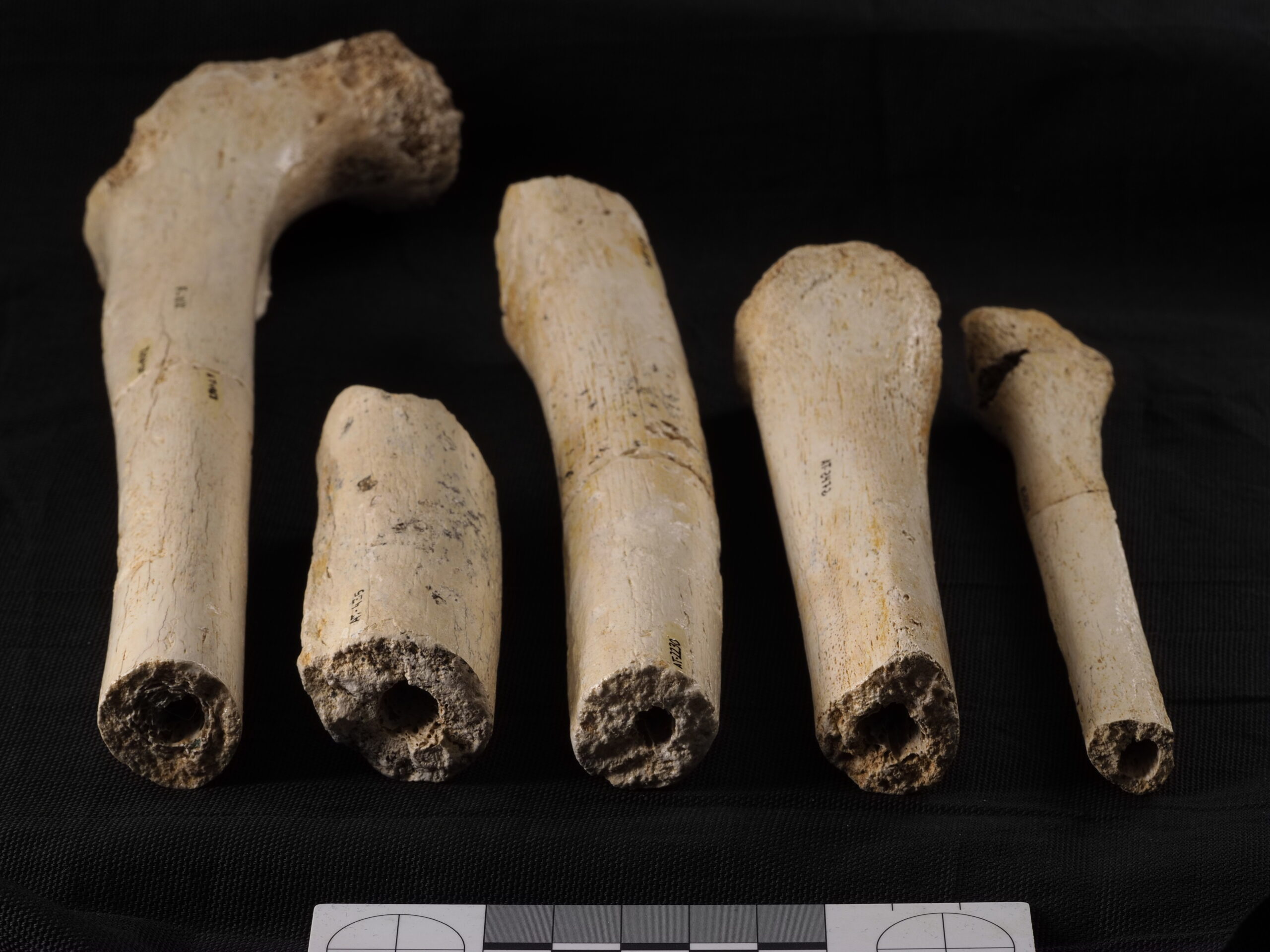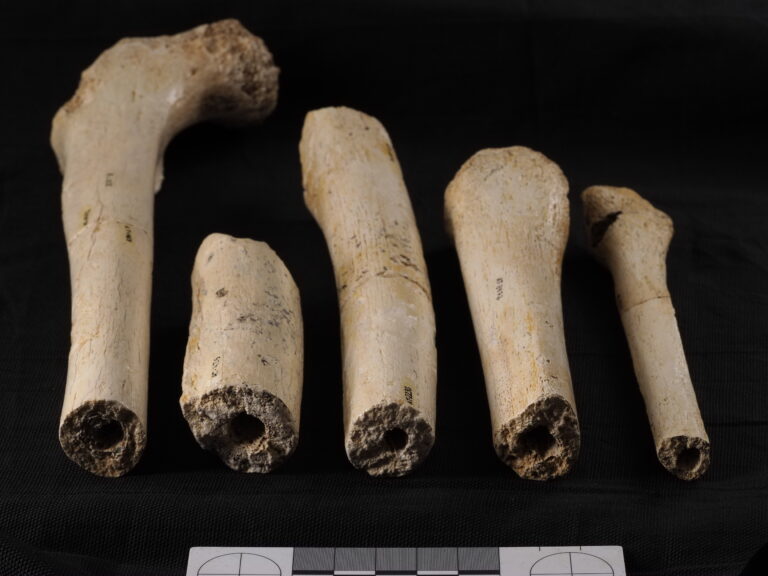A new study ratifies that carnivores did not participate in the accumulation of human remains in the Sima de los Huesos
The Atapuerca Research Team (EIA) participates in a paper led by the Centro Nacional de Investigación sobre la Evolución Humana (CENIEH), that presents a taphonomic analysis of the bone alterations in the skeletons of over 29 individuals found at the Sima de los Huesos site (Sierra de Atapuerca, Burgos), which confirms that carnivores did not participate in the accumulation of these human remains.
The authors of this paper, which has just been published in the journal The Anatomical Record, have analyzed the postcranial elements, that is, from the neck down, of the human remains recovered from this cave, to assess in detail the bone modifications observed in these individuals from the Sima de los Huesos.
The excellent state of conservation of the anatomical elements that could be consumed by carnivores, together with the patterns of bone modification, have definitively ruled out the intervention of these animals in the transport and accumulation of human bodies inside the cave, with their activity being relegated to sporadic scavenging “probably by bears which fell into the cavity by accident”, says Nohemi Sala, the lead author of this new study.
The Sima de los Huesos fossils have been affected by postmortem modification processes typical of cave interiors, such as fracturing due to sediment pressure, precipitation of minerals such as oxides of manganese or calcium carbonate crusts, and minor rodent activity.
The results obtained corroborate earlier research such as that presented a year ago about the cranial remains from the site, and they have helped underpin certain interpretations of the taphonomic processes, which are the physical, chemical, and biological ones, that affected these hominins between death and the moment they were found.

Perimortem
Just as for the skull elements, the main fracturing of the postcranial bones took place long after those individuals’ deaths, when the cadavers no longer had soft tissues and the bones were “dry”. However, it is likely that a small proportion of the fractures occurred at a moment close to death, something technically known as a perimortem fracture, in fresh bone.
Unlike the skull elements, in which it was possible to establish the causes of certain perimortem fractures, in the postcranial skeleton it was not possible to decide whether the few fractures in fresh bone were caused by accidents, acts of violence, or the fall of the bodies through the chimney that gives access to the site. “In fact, we have not found defensive fractures in, for instance, the ulnas, which could have been related to the cases of violence documented in the skulls”, explains Sala.
Time capsule
Thousands of bones have been recovered from the Sima de los Huesos cave, thanks to the constant conditions of temperature and humidity in the cavity over the last half-million years. These conditions have nurtured the exceptional state of preservation of the fossils recovered since 1970, including the most fragile skeletal elements of these hominins. “This spot has acted as a time capsule, whose geological characteristics have partnered with the fossil record”, adds Sala.
This work, in which the participants are EIA scientists from the CENIEH, the Universidad Complutense de Madrid, Universidad de Alcalá, Universidad de Burgos, Universidad del País Vasco UPV/EHU, and Binghamton University, was financed by the projects PID2021-122355NB-C31 and PID2021-122355NB-C33 from the MCIN / AEI / 10.13039 / 501100011033 / ERDF, EU and the European Research Council (ERC-DEATHREVOL, no. 949330).
Bibliographic information:



